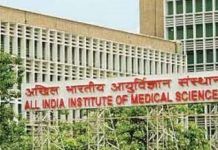Internet users in tier-II cities are most vulnerable to cyber security threats, with Patna being the most susceptible. A staggering 47 per cent of netizens surveyed in that city said they had been attacked. Patna was followed by Guwahati and Lucknow, according to the latest report by IT security solutions provider K7 Computing. The study says that almost three out of every ten Indian cyber users encountered one or more cyberattacks, while metro cities have experienced a similar number when compared to the previous quarter.
Among the metros and tier-I cities, Delhi has seen the highest increase in terms of infection rate, with a growth of six per cent on a quarter-on-quarter basis, says K7 Computing’s Cyber Threat Monitor report for the second quarter of 2019-20. The company uses infection rate, described as the regional percentage of threat events reported to its K7 Ecosystem Threat Intelligence (K7ETI) infrastructure, as a barometer to measure the exposure to threats faced by netizens grouped by state capitals, tier-1 and tier-2 cities. This includes those who encountered at least one threat event during the period.
According to the study, Patna registered the highest percentile of cyberattacks at 47 per cent compared to the other Tier-2 cities covered in the study, and higher than any Tier-1 city. Guwahati, Lucknow, Bhubaneswar, and Jaipur posted a massive 45 per cent, 44 per cent, 43 percent and 40 percent of cyber users coming under attack. The study says that almost three out of every ten Indian cyber users encountered one or more cyberattacks, while metro cities have experienced a similar number of cyberattacks when compared to the previous quarter.
Among metro cities, the cyber attacks in Delhi increased in the second quarter with a 6 percent increase in infection rate compared to the previous quarter. The infection rate in Cyber City Hyderabad is 41 per cent from 39 per cent recorded last quarter. Bengaluru and Pune experienced 39 percent and 35 percent of cyberattacks, similar to the previous quarter. Despite a two per cent decrease in infection rate from the last quarter, Chennai remains most vulnerable at 46 per cent. Kolkata follows, with 41 per cent. Ahmedabad, at 37 per cent, witnessed a one per cent drop in infection rate compared to the previous quarter, and Mumbai had 30 per cent.








